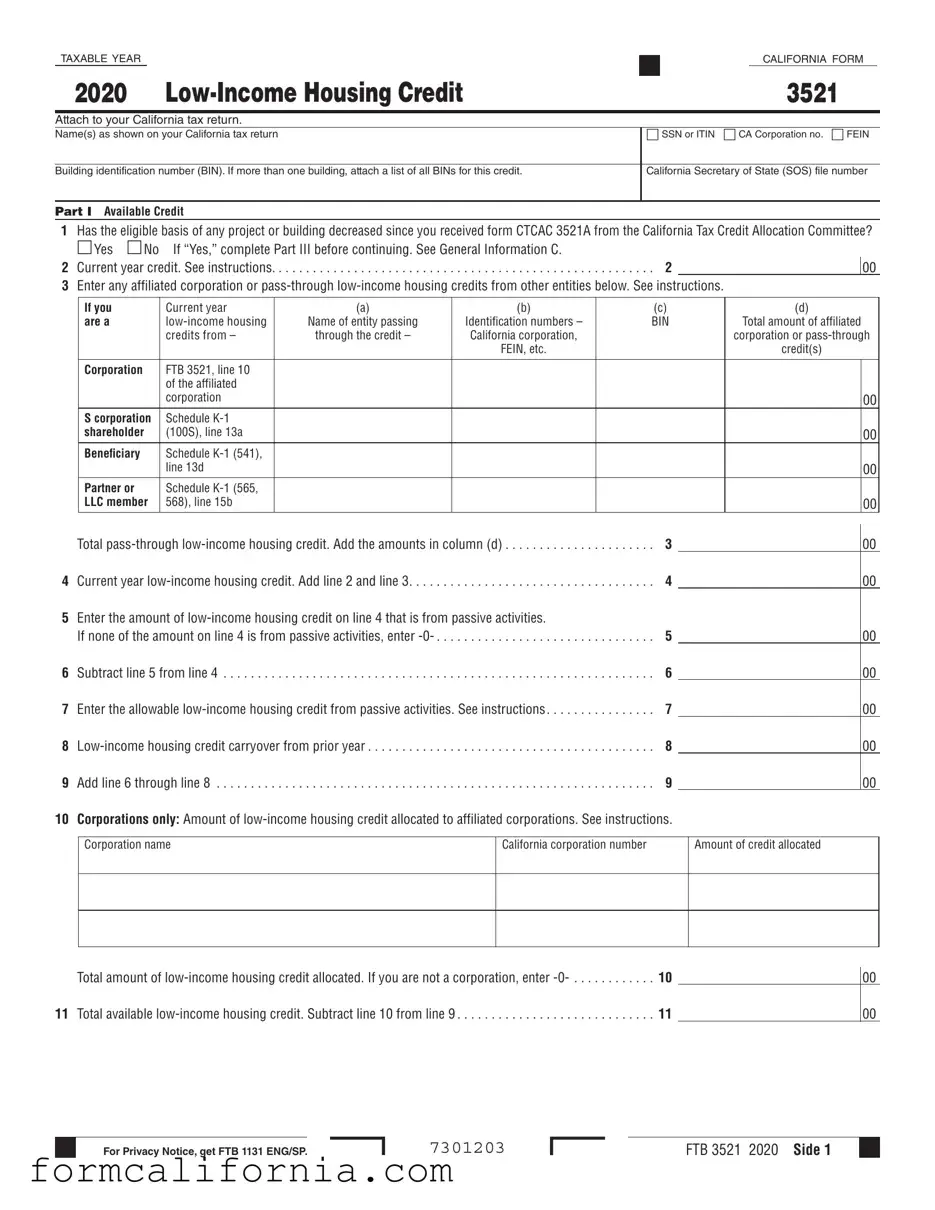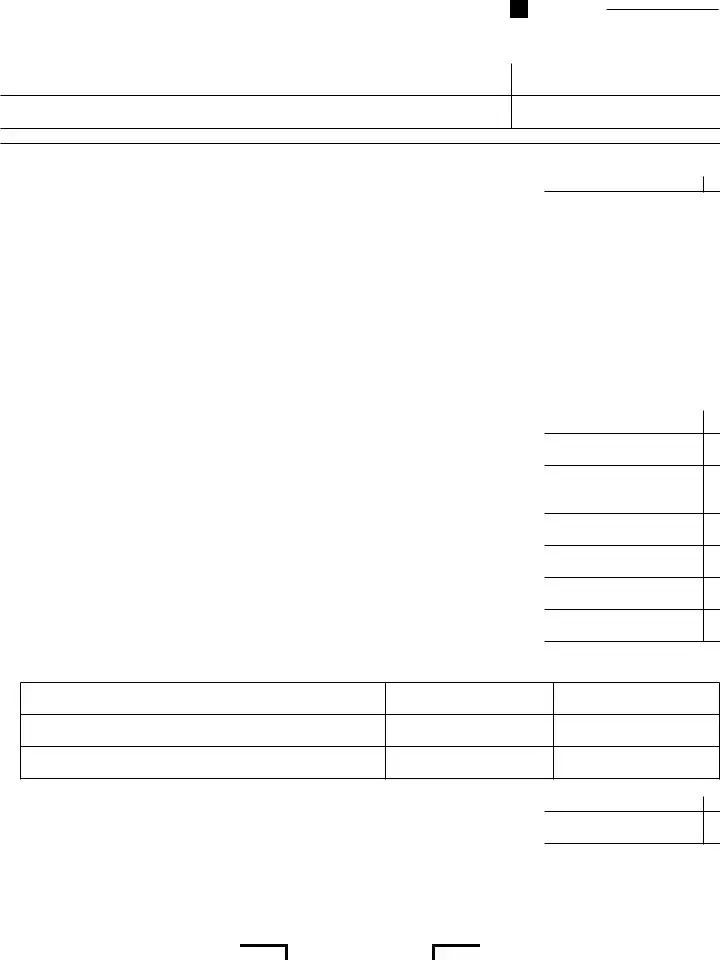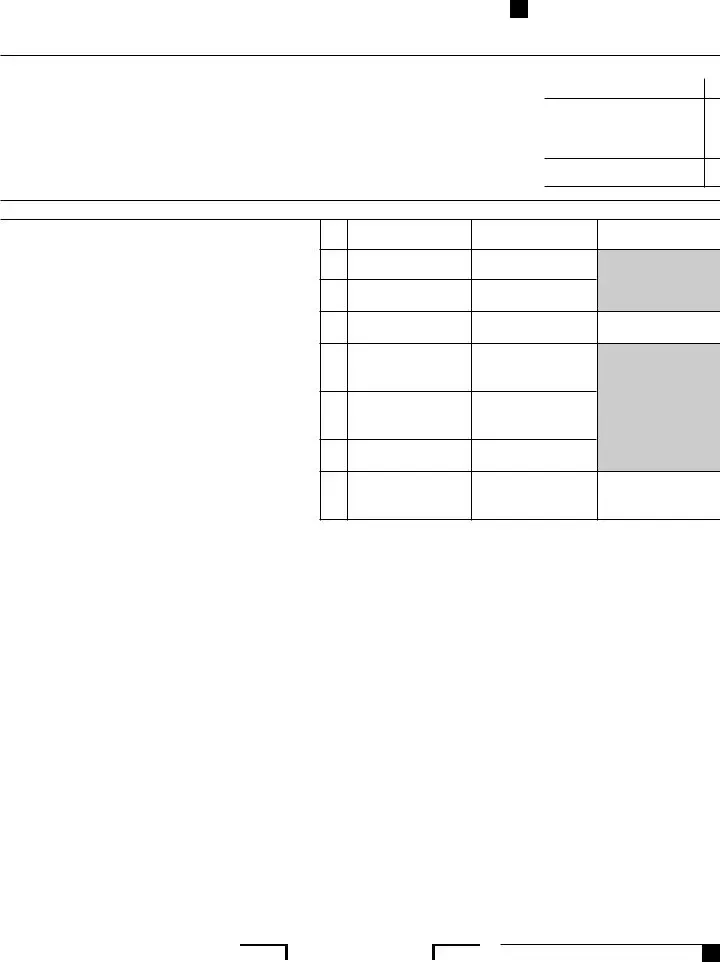The IRS Form 8586, "Low-Income Housing Credit," presents a notable similarity to the California Form 3521, as both are utilized for reporting tax credits related to low-income housing projects. They serve to ensure that entities involved in providing affordable housing are recognized with tax incentives, encouraging more development in this sector. While the IRS form is for federal tax purposes, California's form specifically addresses the state's tax considerations, tailoring its focus to the California Tax Credit Allocation Committee's (CTCAC) regulations and requirements.
Form 8609, "Low-Income Housing Credit Allocation and Certification," is another document closely aligned with California Form 3521. This form is a foundational document for property owners, as it serves as a formal allocation and certification of the low-income housing tax credit from the state agency to the taxpayer. Essentially, it is the precursor that qualifies owners to claim annual credits on forms like the 8586 or 3521, delineating the project's eligibility and the specific allocation of credits over a 10-year period.
The "Carryover Allocation" document is critical in the process of securing low-income housing tax credits, especially when aspects of these projects span multiple tax years. Similar to sections within California Form 3521 that address carryover credits, this document ensures that any unused credits due to tax liability limits can be applied to future tax years, preserving the economic viability of affordable housing initiatives over time.
Form 8823, "Low-Income Housing Credit Agencies Report of Noncompliance or Building Disposition," while serving a different primary purpose from Form 3521, shares the theme of compliance and oversight of low-income housing properties. It is used by agencies to report to the IRS any issues of noncompliance or when a property is no longer part of the program. Both documents are integral to the regulatory framework ensuring that the benefits of the low-income housing program are realized as intended.
Form 8866, "Interest Computation Under the Look-Back Method for Completed Long-Term Contracts," although more broadly applicable beyond low-income housing, shares similarities in tax calculations with certain sections of California Form 3521. Specifically, it involves intricate calculations related to deferred taxes, an issue that can also arise in the context of allocating and carrying over low-income housing credits across different tax periods.
The Schedule K-1 forms, particularly those used by partnerships and S corporations (Form 1065, Schedule K-1 for Partnerships, and Form 1120S, Schedule K-1 for S Corporations), share similarities with the pass-through section of Form 3521. They are pivotal in allocating income, deductions, and credits, including low-income housing credits, to partners or shareholders. This ensures that the tax benefits of low-income housing projects flow through to the individual level, where they can be claimed on personal tax returns.
Finally, the California Secretary of State (SOS) file number and related documentation, while not tax forms per se, are essential for entities engaging in low-income housing projects and claiming credits through Form 3521. The SOS file number is a unique identifier for registered business entities, ensuring that the entity is duly recognized and eligible to undertake such projects and receive related tax benefits under California law.


